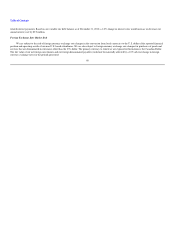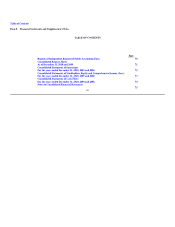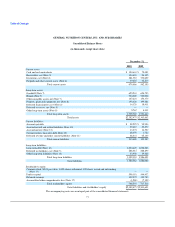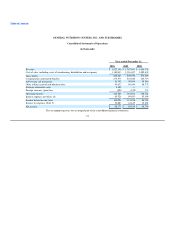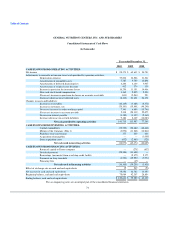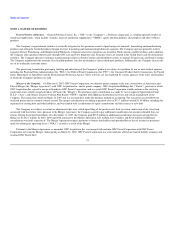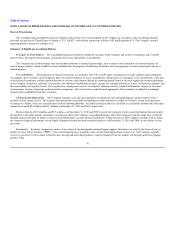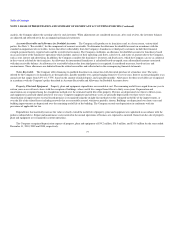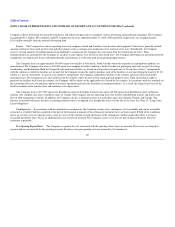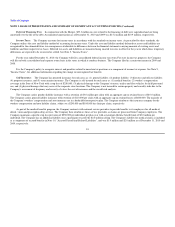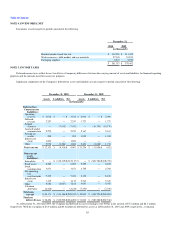GNC 2011 Annual Report Download - page 82
Download and view the complete annual report
Please find page 82 of the 2011 GNC annual report below. You can navigate through the pages in the report by either clicking on the pages listed below, or by using the keyword search tool below to find specific information within the annual report.
Table of Contents
NOTE 2. BASIS OF PRESENTATION AND SUMMARY OF SIGNIFICANT ACCOUNTING POLICIES (Continued)
analysis, the Company adjusts the carrying value for such inventory. When adjustments are considered necessary, after such reviews, the inventory balances
are adjusted and reflected net in the accompanying financial statements.
Accounts Receivable and Allowance for Doubtful Accounts. The Company sells product to its franchisees and, to a lesser extent, various third
parties. See Note 3, "Receivables", for the components of accounts receivable. To determine the allowance for doubtful accounts in accordance with the
standard on impairment of receivables, factors that affect collectability from the Company's franchisees or third-party customers include their financial
strength, payment history, reported sales and the overall retail economy. The Company establishes an allowance for doubtful accounts for franchisees based
on an assessment of the franchisees' operations which includes analysis of their operating cash flows, sales levels, and status of amounts due to the Company,
such as rent, interest and advertising. In addition, the Company considers the franchisees' inventory and fixed assets, which the Company can use as collateral
in the event of a default by the franchisee. An allowance for international franchisees is calculated based on unpaid, non collateralized amounts associated
with their receivable balance. An allowance for receivable balances due from third parties is recognized, if considered necessary, based on facts and
circumstances. These allowances are deducted from the related receivables and reflected net in the accompanying financial statements.
Notes Receivable. The Company offers financing to qualified franchisees in connection with the initial purchase of a franchise store. The notes
offered by the Company to its franchisees are demand notes, payable monthly over a period ranging from five to seven years. Interest accrues principally at an
annual rate that ranges from 8.0% to 13.75%, based on the amount of initial deposit, and is payable monthly. Allowances for these receivables are recognized
in accordance with the Company's policy described in Accounts Receivable and Allowance for Doubtful Accounts above.
Property, Plant and Equipment. Property, plant and equipment expenditures are recorded at cost. The remaining useful lives ranged from one year to
sixteen years across all asset classes with the exception of buildings, whose useful lives ranged from fifteen to thirty seven years. Depreciation and
amortization are recognized using the straight-line method over the estimated useful life of the property. Fixtures are depreciated over three to fifteen years,
and equipment is generally depreciated over ten years. Computer equipment and software costs are generally depreciated over three to five years.
Amortization of improvements to retail leased premises is recognized using the straight-line method over the estimated useful life of the improvements, or
over the life of the related leases including renewals that are reasonably assured, whichever period is shorter. Buildings are depreciated over forty years and
building improvements are depreciated over the remaining useful life of the building. The Company records tax depreciation in conformity with the
provisions of applicable tax law.
Expenditures that materially increase the value or clearly extend the useful life of property, plant and equipment are capitalized in accordance with the
policies outlined above. Repair and maintenance costs incurred in the normal operations of business are expensed as incurred. Gains from the sale of property,
plant and equipment are recognized in current operations.
The Company recognized depreciation expense of property, plant and equipment of $39.2 million, $36.9 million, and $31.6 million for the years ended
December 31, 2010, 2009 and 2008, respectively.
77


